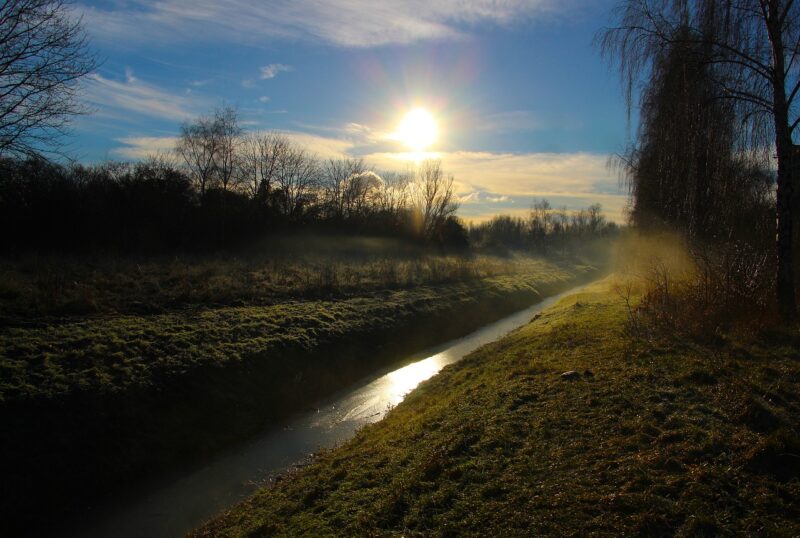What Lies Beneath: Exploring the Uncharted Depths of the Mariana Trench
November 14, 2024

The Mariana Trench, located in the western Pacific Ocean, is renowned as the deepest oceanic trench in the world, reaching a staggering depth of about 36,000 feet (approximately 11,000 meters). This abyss, often shrouded in mystery, is a realm where sunlight fails to penetrate, and the pressures are unimaginable. But what lies beneath this dark surface? In this article, we delve into the fascinating world of the Mariana Trench, exploring its geological significance, unique ecosystems, discoveries, and the ongoing efforts to study this uncharted territory.
1. Introduction to the Mariana Trench
The Mariana Trench is a crescent-shaped trench in the Earth’s crust, situated east of the Mariana Islands. This trench is not merely a depression in the ocean floor; it represents a collision zone between two tectonic plates—the Pacific Plate and the Mariana Plate. As the Pacific Plate is subducted (or pushed down) beneath the Mariana Plate, it forms the trench and sets the stage for a variety of geological phenomena.
2. Geological Formation of the Trench
Understanding how the Mariana Trench came to be requires a brief look at plate tectonics. This scientific theory explains the movement of the Earth’s plates, which float on the semi-fluid asthenosphere beneath them. The movement and interactions of these tectonic plates can lead to the formation of trenches, mountain ranges, and earthquakes.
The Mariana Trench was formed over millions of years through the process of subduction, where the older, denser Pacific Plate moves beneath the lighter Mariana Plate. The extreme conditions generated by this interaction not only produce the trench itself but also influence volcanic activity in the region.
3. The Unique Ecosystem of the Mariana Trench
Despite its extreme conditions—crushing pressures, freezing temperatures, and complete darkness—the Mariana Trench harbors a unique and diverse ecosystem. Scientists have discovered many new species in these depths, challenging our understanding of biodiversity in extreme environments.
Key Organisms in the Trench:
- Amphipods: These shrimp-like creatures have been found at great depths, including the infamous “Deep Sea” amphipod discovered during the voyage of the submersible DSV Limiting Factor in 2019.
- Giant Squid: While not uniquely adapted to the trench, these elusive creatures inhabit the deeper ocean and have been found in various locations, feeding on deep-sea fish.
- Microorganisms: Bacteria and archaea thrive in the trench’s extreme conditions, playing a significant role in nutrient cycling and biogeochemical processes.
The adaptations seen in these organisms, like the ability to withstand immense pressure or to survive with minimal nutrients, can offer insights into the possibilities of life on other celestial bodies.
4. Significant Discoveries in the Mariana Trench
Over the years, various expeditions have ventured into the depths of the Mariana Trench, each yielding significant discoveries that enhance our understanding of this mysterious environment.
In 1960, the bathyscaphe Trieste reached the bottom of the trench for the first time, mapping the landscape and collecting samples. More recently, in 2012, filmmaker James Cameron made a solo dive to the trench’s deepest point, sending back stunning footage and samples.
One of the most significant discoveries was the finding of microplastics in deep-sea creatures, highlighting the pervasive impact of pollution even in the most remote regions of our planet. This revelation raised alarms about human activity’s effects on marine ecosystems and the health of oceanic life.
5. The Technological Challenges of Exploration
Exploring the Mariana Trench presents a formidable set of challenges due to its extreme conditions. As you descend deeper into the ocean, the pressure increases—approximately 1,086 bars at the bottom of the trench. This pressure can easily crush conventional submersibles, making specialized technologies and materials indispensable for successful exploration.
Types of technology employed include:
- Deep-Diving Submersibles: Specialized crafts designed to withstand extreme pressures, such as DSV Limiting Factor and the remotely operated vehicle (ROV) Victor 6000.
- Underwater Robots: Equipped with cameras and sampling tools, these robots assist in mapping and studying the trench’s ecosystem without the risks associated with human life at such depths.
- Advanced Imaging Technology: Utilizing sonar mapping and 3D imaging, researchers can create detailed maps of the trench floor while gathering data on geological features and organism distributions.
These innovations not only help scientists understand the trench better but also pave the way for future explorations of other unexplored oceanic depths.
6. The Importance of Protecting the Mariana Trench
As our understanding of the Mariana Trench deepens, so does our recognition of its ecological significance and the urgent need for conservation. The trench’s unique ecosystems face threats from human activities, including deep-sea mining, plastic pollution, and climate change.
To safeguard the trench, international cooperation is crucial. Initiatives such as the establishment of Marine Protected Areas (MPAs) can play a significant role in conserving these crucial ecosystems and limiting human impact. Moreover, increased awareness and research efforts are necessary to ensure the protection of this fragile environment for future generations.
7. Conclusion: The Ongoing Quest for Knowledge
The Mariana Trench is a captivating frontier that continuously challenges our understanding of life, geology, and the impacts of human activity on the Earth’s oceans. As scientists strive to unlock the mysteries hidden beneath its dark waters, we are reminded of our responsibility to protect this extraordinary environment.
Ultimately, the trench stands not only as a geological marvel but also as a testament to the resilience of life and the boundless opportunities for discovery that remain in our world’s oceans. As we journey deeper into understanding, we also preserve what lies beneath for generations to come.







